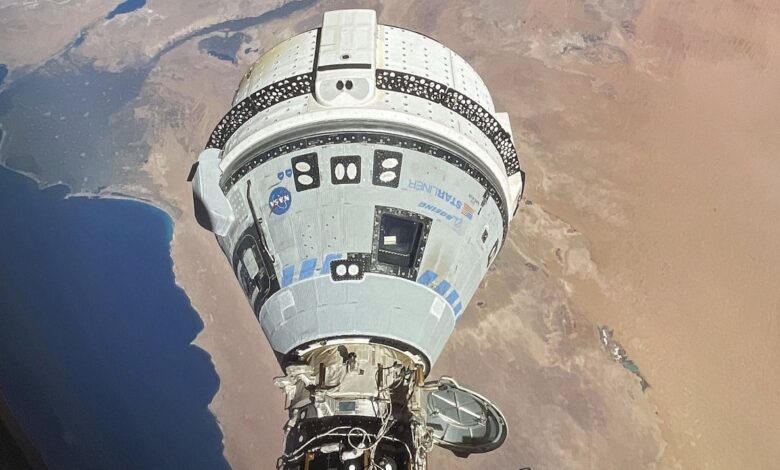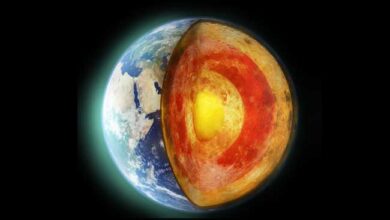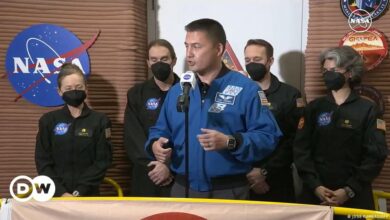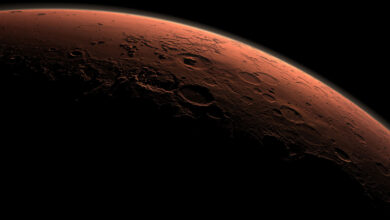‘Happy to be there’: What next for the Boeing Starliner crew stranded on the ISS?

[ad_1]
Astronauts Barry Wilmore and Sunita Williams, the first crew on Boeing’s Starliner, have been stranded on the ISS. What happens now?
The two astronauts marooned on the International Space Station (ISS) with no return date probably “have a big smile on their face and happy to be there,” according to the French former astronaut Jean-Francois Clervoy.
Boeing Starliner test crew Barry “Butch” Wilmore and Sunita “Suni” Williams left Earth on June 5 and were supposed to be back eight days later.
But several issues on the Boeing craft mean their return has been put on hold three times. According to Reuters, they might not return from orbit until July 6.
In an interview with Euronews Next, Clervoy said it is not a worrying scenario the astronauts are concentrating and doing their jobs.
They are in close communication with the team on the ground and can call their families everyday. If anything, it gives them more time on the ISS, which he said they would “enjoy”.
They are also astronauts you can trust, said the French former astronaut, who has worked with both Wilmore and Williams in the past and has a close friendship with Wilmore.
“He’s an extraordinary guy. You can confide in him 100 per cent and he’ll be the guy who’ll do anything to help you and save you,” Clervoy said.
“He’s the kind of astronaut when you meet him, you think you’d like to fly with him. Sunita is the same, from what I know of her from a professional relationship, she’s a very nice girl, very competent”.
Are they stuck in space?
Media reports have said they are “stuck” on the ISS, a term which Clervoy strongly rejects.
If the ISS has to be evacuated, the Starliner can be used as a lifeboat, he said, adding that “despite the problems, Starliner is capable of fulfilling this function, with slightly degraded redundancies but it’s enough to get Bush and Sunita back safely”.
Starliner can stay docked at the ISS for up to 45 days, said NASA’s commercial crew manager Steve Stich in comments to the media.
“They’re not stuck. What they are is waiting for Boeing,” said Laura Forczyk, owner of the space consulting firm Astralytical.
“They are looking to see how they can evaluate Starliner while it is attached to the ISS,” she told Euronews Next.
“That’s because there are certain things that they cannot evaluate on the ground,” Forczyk said, adding that the tests are also to see if any future Starliner would be safe to fly humans.
Forczyk also said that they have enough supplies to last for a while, as these kinds of measures are taken into account before take-off.
Even if Starliner cannot return them, SpaceX’s Crew Dragon or Russia’s Soyuz spacecraft could return them, though Forczyk and Clervoy said this would be unlikely.
What went wrong with Starliner?
This is the first time that Boeing’s Starliner has been launched on a manned mission.
The spacecraft had problems even before take-off and was delayed a month due to a helium leak and power supply issues.
The leak was so small at the time that engineers believed it was still safe to take off. Helium pushes propellent to the thruster systems to move in space and slow down the journey into the Earth’s atmosphere.
After deployment, Starliner suffered five helium leaks, five failures of its 28 maneuvering thrusters, and a propellant valve failed to completely close.
“From what I’ve understood, helium leaks are not worrying, but they’re not normal, they’re not expected,” said Clervoy.
“Boeing and NASA, which is the purchaser of the services and which is concerned because it’s their [NASA] astronauts who are flying, they want to understand, they want to see how they’re evolving, why the flow and where this leak is coming from,” he added.
NASA and Boeing are working on a fix and once NASA officials give the team a go-ahead for a return, Starliner’s thrusters would be used to undock the capsule from the ISS and begin the six-hour journey to Earth.
What does it mean for Boeing?
NASA wants Starliner to become the second American spacecraft to take astronauts to the ISS, alongside SpaceX’s Crew Dragon.
While the incident is embarassing for Boeing, which is also facing criticism on Earth, Clervoy is confident that NASA will continue its partnership with the aerospace giant.
“There will probably be a delay in using Starliner until Boeing fixes the issues. But Starliner is almost there and there are just a few issues to iron out,” he said, adding it could be used for routine ISS journeys soon.
Clervoy said this is especially true as, if Russia ends its spacecraft agreement with the United States before 2030, NASA will not want to rely on the one vessel from SpaceX.
But the very fact that there are technical reasons for the delay to Earth “is something that Boeing should be concerned about,” said Forczyk.
“NASA is evaluating whether or not Boeing is a good partner for the International Space Station commercial crew programme,” she added.
“In the future, Boeing is supposed to fly up to six Starliner missions but if this mission is not fully successful to the criteria that NASA sets, then NASA could say you need to do another demo mission, which would be another cost to Boeing”.
Forczyk said that in the beginning, everyone expected Boeing to be the first to carry crew to the ISS. But that NASA has “really come to rely on SpaceX” for cargo, for payloads, and crewed missions.
This can be seen as NASA awarded SpaceX the contract to build the vehicle that will retire the ISS out of orbit from Earth.
“What we’re seeing is that SpaceX has naturally, through its actions, become the front runner and become the workhorse of the world in launch,” said Forczyk.
“And Boeing has been embarrassed in comparison”.
[ad_2]
Source link




